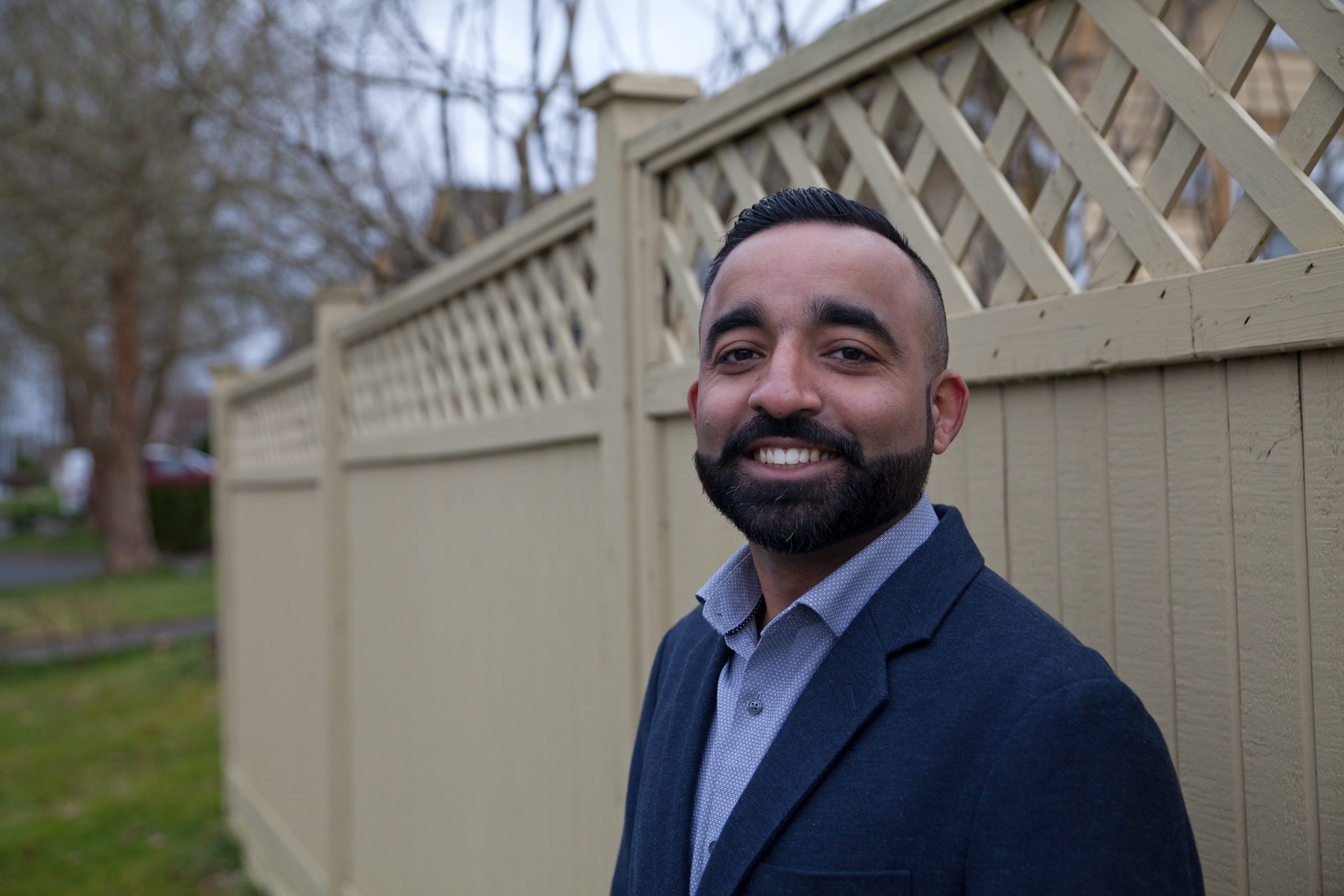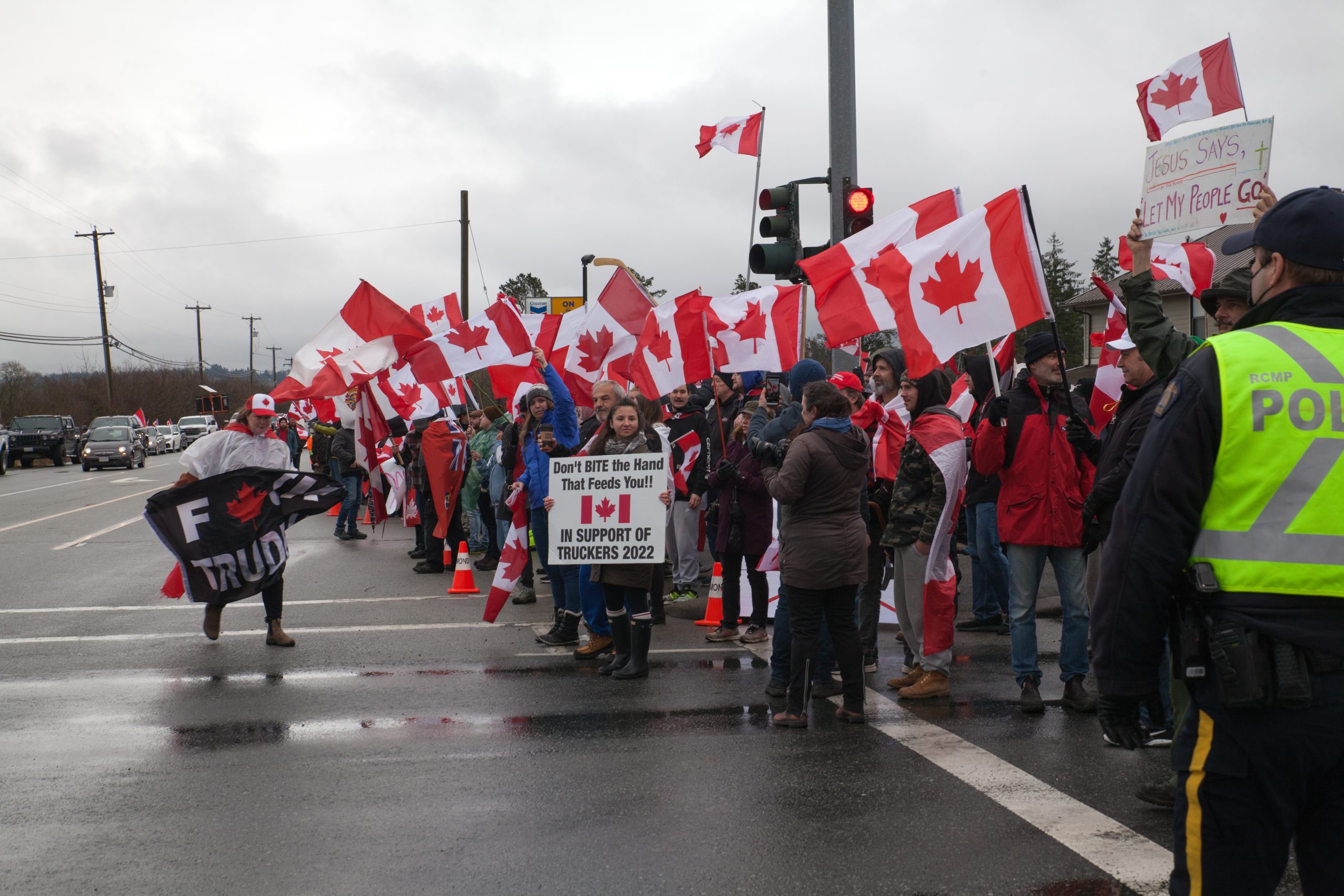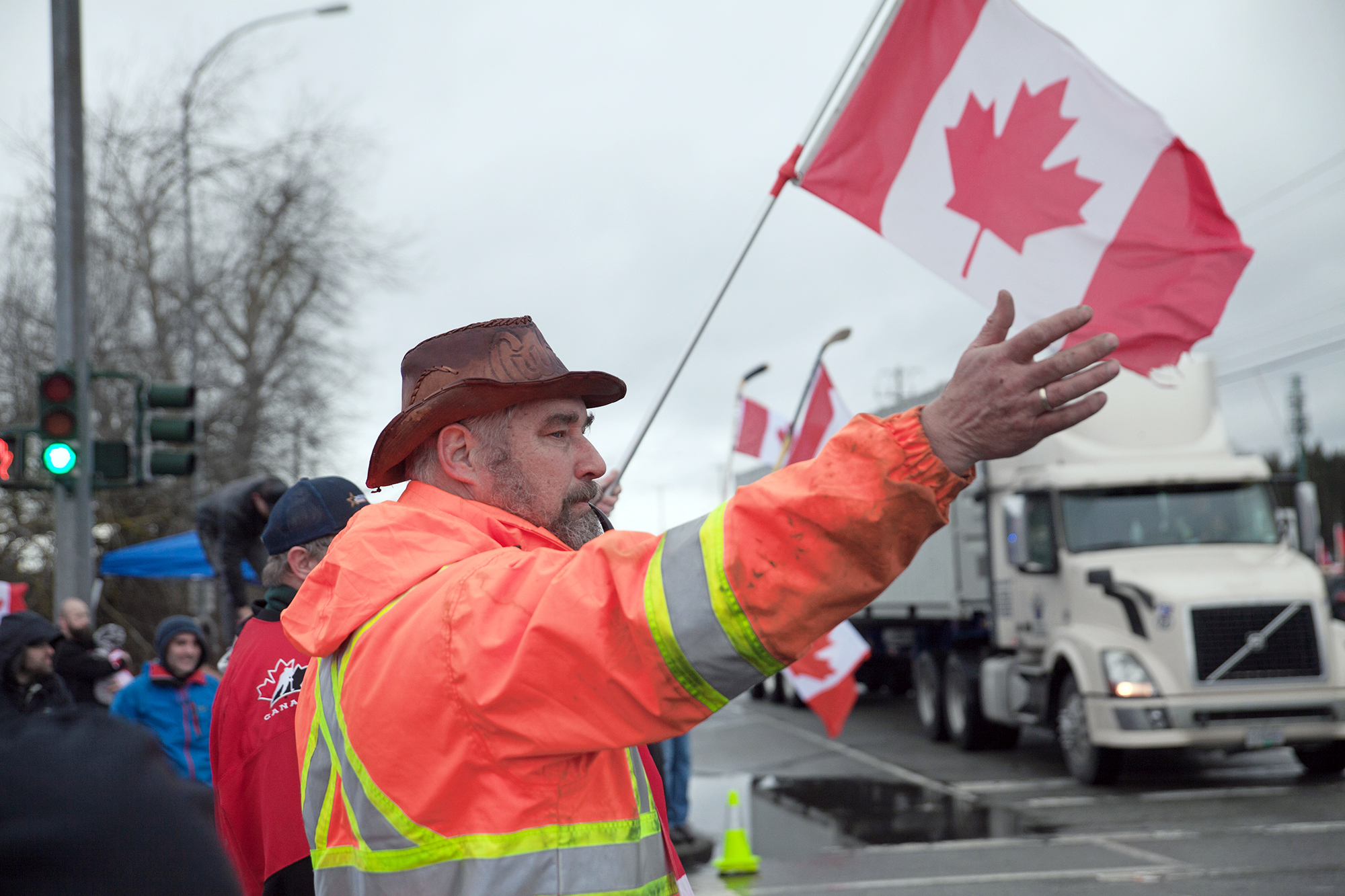The mighty trucks have retreated from the Canadian capital, and nearly 200 blockaders were arrested, but there is no moment of triumph. The self-declared Freedom Convoy has shown the country over the past three weeks how vulnerable it is, how manipulable and unprepared. The convoy has divided society, probably radicalized many Canadians, and, in the end, produced images that support its narrative that Canada has taken on authoritarian traits in the pandemic: Federal police officers in full riot gear advancing on families with children – whom parents have used as shields. Convoy leaders live-streaming their own arrests with stoic expressions.
“Declaring a state of emergency was a difficult decision,” says Barbara Perry, Canada’s leading extremism researcher, via video conference with ZEIT ONLINE. The protest was an immense success for Canada’s far-right groups, she said. Their number has already tripled, to about 300, due to the Trump era and the pandemic, she said.
Sieh dir diesen Beitrag auf Instagram an
Hatred toward reporters
On the U.S.-Canadian border in Surrey, in the far southwest of the country, there is little sign of the state of emergency this weekend. A police helicopter is circling above the weekly convoy demonstration, and local police have handed over the baton to federal RCMP. As a precaution, the RCMP has closed the border to prevent protesters from doing it themselves – like last weekend when 16 demonstrators were arrested after a several-day border blockade. The result is the same: Truckers and commuters cannot go into the neighboring country. “We don’t mind protests,” says Elenore Sturko, press officer for the local RCMP – addressing the bystanders more than the reporter. “In this country, you can go to Ottawa and make the biggest mess, that’s how free we are.”
It seems as if the local RCMP unit wants to counter the images from Ottawa. But the anger of the self-proclaimed truckers is looking for another target: When Global News reporter Kamil Karamali also interviewed spokesperson Sturko that morning, demonstrators encircled him – he posted videos of the scene on Twitter. “Shame on you,” one man hissed in his face. When Karamali retreated, the man chases him, and dozens of demonstrators follow. Public broadcaster CBC’s Dan Burritt is also recognized and circled amid boos. Shielded by the RCMP, the reporters reach their cars; as soon as they are inside, demonstrators pound their fists against the windows, one man spits on them.
To this day, many media outlets write of the “truckers’ protest,” but the convoy movement has not been about truckers’ concerns for a long time – if it ever was. Several groups of right-wing extremists, conspiracy theorists, and anti-state activists had called last month for people to drive to Ottawa on January 22 from various corners of the country. Their official reason: They wanted to demonstrate against a pandemic rule for unvaccinated truckers that the U.S. and Canada introduced in January. Since then, truckers without a vaccination card must observe a 14-day quarantine when entering and leaving the country, just like other travelers.
The bulk of truckers are angry at the convoy drivers
“The organizers didn’t even ask us if we wanted to go or what we thought about it!” Truck driver Ajay Singh Toor is angry. Not at the Corona measures – he’s been vaccinated for a long time – but at a movement that is putting the good image of his profession at risk. And whose co-founder, prominent right-winger Pat King, even rails against truckers like him who belong to the Sikh minority. “As truckers, we have our own issues”, Singh says. “Vaccination rules are definitely not one of them.”
As the convoy set out on January 22, Singh and many other truckers in downtown Vancouver were demonstrating against a very different concern: life-threatening conditions on British Columbia’s highways, where 17 truckers were killed in January alone. “So far, in every snowstorm, one of us has to have an accident before snow removal companies go out and do what they’re paid to do: Remove snow and ice.”

Photo: Truck driver Ajay Singh Toor finds the “trucker” protest insulting.
The 28-year-old is a volunteer press officer for the largest truckers’ association in British Columbia, the West Coast Trucking Association. He showed up for the interview in a suit and with a freshly printed trade show display. The topic is important to him; he himself lost two trucker friends on provincial highways in January. But his organization has yet to be granted a meeting with the provincial government, and the convoy does not make it easier for them: Since late January, Twitter has been flagging all of his organization’s tweets as “possibly sensitive content” – probably because the platform wrongfully considers them part of the Freedom Convoy, Singh suspects.
Ten million Canadian dollars for right-wing populists
The Canadian Truckers Association (CTA) has been distancing itself from the movement from the first day. On January 22, it declared in a statement that 85 percent of its drivers were vaccinated and that the new Covid rule affected only very few truckers who could easily evade it by only accepting domestic trips. “Most of the convoy organizers have no connection to the trucking industry,” researcher Barbara Perry emphasizes. “They were just looking for a big lobbying group they could leverage. The new Covid rules for truckers were a welcome opportunity – especially since the group brings highly visible weapons, their trucks.”
The strategy, which Canada’s right has already used in 2019 for its Yellow Vests movement and United We Roll, worked: More and more people joined on the road to Ottawa, and the organization continually expanded its goals. Soon they were demanding the abolition of all Covid measures in the country, and the organization Canada Unity collected 320,000 signatures for a pseudo-legal text to have the government dissolved if their demands were not met.
Meanwhile, a politician from the far-right secessionist party Maverick, Tamara Lich, raised more than ten million Canadian dollars in donations through a fundraiser on the platform GoFundMe (and, after it was blocked, millions more through the right-wing websites GiveSendGo and Adopt-a-Trucker). It’s an outrageous sum by Canadian standards – the governing Liberal Party raised just 15.1 million Canadian dollars in all of 2020.
Trump and Musk are also getting in on the act
A significant portion of that sum came from donors in the U.S. who had become aware of the movement through prominent advocates: Donald Trump said in a statement that the convoy was “peacefully protesting the harsh policies of far left (sic) lunatic Justin Trudeau who has destroyed Canada with insane covid mandates.” Republican Senator Ted Cruz and libertarian Tesla CEO Elon Musk also tweeted support. And right-wing U.S. talk shows declared the self-proclaimed truckers heroes.
“The U.S. should not interfere in Canada’s internal affairs,” says Barack Obama’s former ambassador to Canada, Bruce Heyman, in a video phone call with ZEIT ONLINE. After the end of his term Heyman lives in Chicago, “as a private citizen,” he stresses, but he continues to follow the U.S.-Canada relationship closely. “Unfortunately, there are current and former U.S. officials who are trying to destabilize the Canadian government,” he says. Since Donald Trump, he says, many lines have been crossed, and now this one. To his knowledge, this is the first case of such influence peddling in Canada.
But what do right-wing populist U.S. Americans hope to gain by supporting a fringe political group in their neighboring country? This also serves their own agenda, Heyman says: It allows them to distract from the January 6 investigations, fundraise for their own purposes and mobilize their voter base in the United States. “Trump supporters have long had a problem with Canada: a country that has much more liberal social and health care policies and whose values completely contradict theirs. That Trump has explicitly thrown his weight behind truckers and against Trudeau has been taken by many on the right in the U.S. as a call to action.”
400 reported hate incidents
Ottawa police, for example, reported that callers from the U.S. had jammed the city’s emergency hotline for hours. And Canada’s Border Services Agency confirmed by email in response to an inquiry from ZEIT ONLINE that it had stopped U.S. citizens from crossing the border and joining the protests in person. Spokesman Patrick Mahaffy did not answer how many were involved and whether all could be stopped. Without the influence of right-wing populist media and politicians, the Freedom Convoy would not have become so radicalized, Heyman says.
By the time 2,000 semi-trucks and 6,000 other supporters reached Ottawa a week later, the targeted protest against a Covid rule had become an internationally visible right-wing populist movement. The demonstrators blocked the entire downtown area to the front of Parliament and harassed residents who reported a total of 400 hate incidents. They destroyed monuments, bullied journalists, and even tried to arrest police officers. Swastika and Confederate suddenly appeared between Canadian flags, and some opponents of vaccination carried Stars of David with the inscription “unvaccinated.” Justin Trudeau and his family departed to an unknown location, and the mayor of Ottawa declared a state of emergency.
“January 6 in Slow Motion.”
Councillor Catherine McKenney had described the siege as “January 6 in slow motion” – an assessment shared by political scientist Regina Bateson of the University of Ottawa. The U.S. specialist in violent movements has studied the attack on the U.S. Capitol last year. “The Canadian convoy was more successful,” she says in an interview with ZEIT ONLINE. “There was less direct violence, but the blockaders were very much threatening it, to the point of a coup. The Trump supporters in D. C. did make it to the Capitol, but they were kicked right back out by the National Guard. Imagine if no one had reacted and the Trump supporters had stayed for weeks – that’s the situation Ottawa found itself in.”
Yet from the perspective of most residents, Canada has come through the pandemic well precisely because of its relatively strict Corona measures: The odds of dying from Covid-19 have been three times higher in the U.S. so far, and more than 1.5 times higher in Germany – and that’s despite the fact that Canada is much worse equipped with tests and medical masks, and vaccinations started later. Protests against Covid measures have so far been limited; more than 80 percent of Canadians have been vaccinated twice, and 70 percent support mandatory vaccination for adults, according to a recent poll. Acceptance went so far that Justin Trudeau filed for an early presidential election last year because he could be confident of victory – not in spite of his pandemic management, but because of it.
Canada’s police misjudged the populists
Accordingly, the convoy was unpopular with Canadians across party lines. Approval quickly dropped the longer the blockade lasted and the more details emerged: By early February, only 23 percent of Canadians backed the blockade, according to a poll by the Innovative Research Group (IRG); the Angus Reid Institute came in at 27 percent. But how did a minority with so little support secure so much power so quickly?
“Tactical errors,” says Bateson. “The Ottawa police should not have allowed the trucks to drive into the city center in the first place, sit in front of Parliament and use the place as a stage.”
Canadian police are by no means always so restrained in their response: Last summer, federal police arrested nearly 700 activists and indigenous people demonstrating the clearcutting of rainforest on Vancouver Island. When the RCNP stormed a log cabin belonging to pipeline opponents in November, it also arrested two journalists who had been covering the protest. The double standard of the police was also evident in Ottawa, Bateson says. The police officers – who are mostly white – underestimated the criminal potential of the demonstrators, who are also mostly white.
It is astonishing how the police could assume that the protest was normal after the organizers had publicly announced in advance that they wanted to seize power and force Justin Trudeau out of office, says the political scientist. Complaints about police inaction eventually led to the resignation of the local police chief. However, Trudeau should not have left the uprising against his government to a local police unit for weeks either, she adds.
Trudeau’s reputation has suffered
The movement’s organizers already face trial. But if the movement’s goal was to sow discord and radicalize Canadians, it succeeded. The convoy acted as an accelerant for existing conflicts in Parliament: Conservative and Bloc Québécois MPs met with the organizers and blamed Trudeau for the protests. The prime minister tried to sit out the crisis – until the situation came to such a head after weapons were found and border crossings were blocked that he had to declare a national state of emergency.

Photo: A curse on Trudeau, a reference to truck drivers, and one to Jesus: signs at the protest in Surrey.
Toward the end of the protest, only one in five Canadians were satisfied with Trudeau’s crisis management, according to an IRG poll. The Conservatives, Canada’s second-largest party, ousted their party leader Erin O’Toole in the chaos of the crisis. Pierre Poilièvre, a right-wing populist hardliner who cheered the convoy and has often been compared to Donald Trump, has a good chance of succeeding him. If he challenges Trudeau in the next election, U.S. convoy supporters will also be pleased.
Around the world, opponents of Covid measures are adopting the convoy idea. Trump supporters want to copy it in the U.S. as well, setting off from California this week to disrupt Joe Biden’s State of the Union address in Washington, D.C., on March 1. They can’t count on an inexperienced police force and a conflict-averse government there, however, if they entrench themselves in the capital – the Ottawa blockade was a very Canadian phenomenon.
